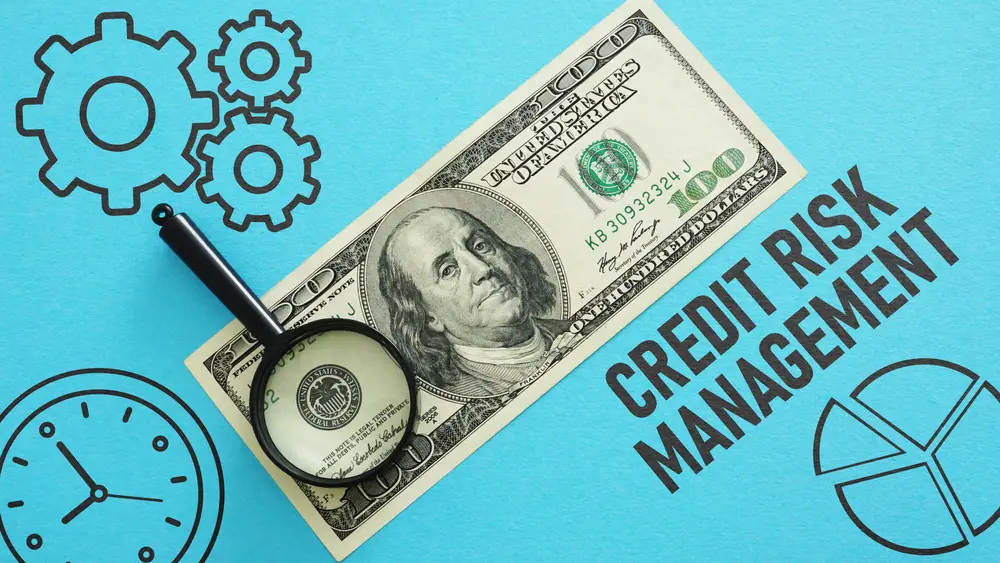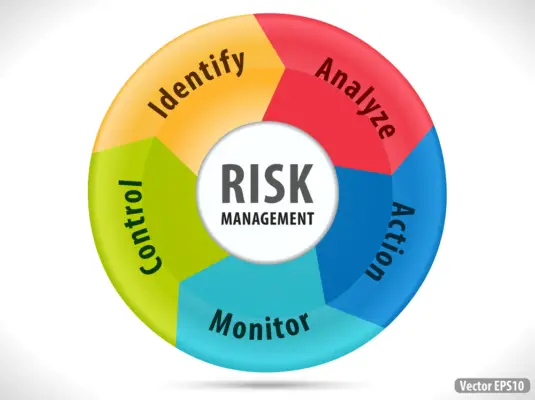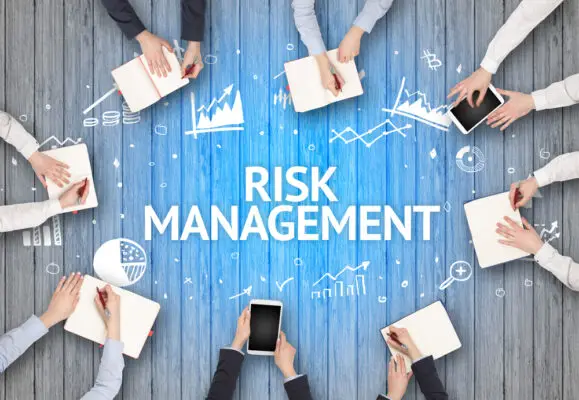Credit risk assessment is an essential component of any lending or financial institution’s operations. It involves evaluating the likelihood that a borrower will default on their debt obligations, helping to protect the lender from potential losses.
Establishing a process for this assessment can be complicated and requires an understanding of both the borrower’s financial situation and current market trends. An effective credit risk assessment helps lenders/financial institutions identify potential defaults and protect themselves from incurring losses while still continuing to provide loans.
In this comprehensive guide we will cover all aspects of credit risk assessment including methods that are used by banks, what criteria should be included in such assessments, as well as how technology can improve accuracy. This guide will help ensure you make informed decisions when assessing credit risks so that your institution remains secure.
Fundamentals of Credit Risk Assessment
Credit risk assessment is a critical component of the lending process. It involves analyzing a borrower’s ability to meet their debt obligations and determining the lender’s aim when advancing credit. Credit risk assessment helps lenders make informed decisions about who they should lend to and how much they should lend.
The traditional approach to credit risk assessment is known as the five Cs: character, capacity, capital, collateral, and conditions. This approach looks at various aspects of a borrower’s financial situation such as their credit score, income level, assets, and other factors in order to determine their creditworthiness.
More recently, data-driven approaches have been developed to assess credit risk more accurately. These approaches use machine learning algorithms to analyze large amounts of data from multiple sources in order to identify patterns that may indicate a higher or lower probability of default on a loan.
Overall, credit risk assessment is an important tool for lenders in making informed decisions about who they should lend money to and how much they should lend. Through understanding the fundamentals of credit risk assessment, lenders can better manage their portfolios and reduce their exposure to potential losses due to defaults on loans.
Defining Credit Risk and its Importance
Credit risk refers to the potential for a borrower to default on their debt obligations, resulting in a financial loss for the lender. Accurately assessing credit risk is critical for lenders, as it enables them to make informed decisions about whether to extend credit to a potential borrower, and under what terms.
Effective credit risk assessment not only helps to minimize losses but also ensures that lenders maintain a healthy loan portfolio, which is crucial for long-term success.
Lenders must consider the borrower’s financial history, current income and expenses, and future prospects. They must also take into account any external factors that could affect the borrower’s ability to make payments, such as changes in the economy or industry trends.
To mitigate credit risk, lenders employ various strategies such as diversifying their loan portfolio across different types of borrowers and industries, setting appropriate limits on loan amounts, and requiring collateral or other forms of security. They do this to reduce their exposure if a borrower defaults on their loan.
Understanding credit risk is essential for lenders to ensure they are making sound lending decisions and protecting themselves from potential losses.
Key Components of an Effective Credit Risk Assessment Framework
A robust credit risk assessment framework should encompass several key components, including:
- A well-defined credit risk policy: This policy should outline the lender’s risk appetite, lending criteria, and the overall approach to credit risk management.
- A thorough data collection process: Lenders must gather comprehensive data on borrowers to accurately assess their creditworthiness.
- Analytical tools and methodologies: These are necessary for evaluating the collected data and generating meaningful insights to inform lending decisions.
- Continuous monitoring and review: Credit risk profiles can change over time, so lenders must periodically reassess borrowers to ensure that their credit risk management strategies remain effective.
Types of Credit Risk: Individual, Business, and Sovereign
Credit risk can be broadly categorized into three types: individual, business, and sovereign.
- Individual credit risk: This refers to the risk associated with lending to individual consumers, such as for personal loans, credit cards, or mortgages.
- Business credit risk: This type of risk involves lending to businesses, either for working capital or long-term financing needs.
- Sovereign credit risk: This risk category involves lending to governments or government-backed entities, which may have implications for the lender’s exposure to geopolitical and economic factors.
Each type of credit risk presents unique challenges and requires specialized assessment techniques to accurately gauge the borrower’s creditworthiness.

Gathering Relevant Data for Credit Risk Assessment
Gathering relevant data is critical for credit risk assessment as it helps lenders make informed decisions about whether or not to extend credit.
The five Cs of credit are commonly used to measure consumer credit risk: character, capacity, capital, collateral, and conditions. Character refers to the borrower’s reputation and trustworthiness; capacity looks at their ability to repay; capital examines their financial resources; collateral evaluates any assets they can use as security; and conditions assesses external factors such as economic trends or regulations.
Lenders should also consider other factors such as expected losses and the borrower’s past repayment history.
Data mining techniques can be used to analyze large amounts of data quickly in order to identify patterns or trends that could indicate a higher risk of defaulting on a loan.
Gathering relevant data and using data mining techniques helps lenders reduce their exposure to potential losses while still providing access to credit for those who need it.
Utilizing Credit Reports and Credit Scores
One of the primary sources of information for assessing a borrower’s credit risk is their credit report and credit score. Credit bureaus compile credit reports, which provide a detailed history of an individual’s or business’s credit activity.
These reports typically include information on past and current credit accounts, payment history, outstanding debt, and any public records related to bankruptcies or liens.
Credit scores are numerical representations of a borrower’s creditworthiness, calculated using the information from their credit report. Lenders often use credit scores as an initial screening tool to quickly assess a borrower’s credit risk.
Evaluating Financial Statements and Business Performance
For business loans, lenders must evaluate the company’s financial statements and overall business performance. Key financial documents include balance sheets, income statements, and cash flow statements. Lenders should analyze these documents to assess the company’s profitability, liquidity, solvency, and overall financial health.
Additionally, lenders should consider the company’s industry position, competitive landscape, and growth potential, as these factors can impact the business’s ability to repay its debt obligations.
Considering Economic Factors and Industry Trends
External factors, such as economic conditions and industry trends, can also influence a borrower’s credit risk. Lenders should be aware of prevailing interest rates, inflation, and unemployment rates, as well as any changes in regulatory or political environments that may impact the borrower’s financial stability.
Industry trends, such as technological advancements or shifts in consumer preferences, can also affect a borrower’s credit risk. By staying informed of these external factors, lenders can make more accurate predictions about a borrower’s ability to meet their debt obligations.
Assessing the Five Cs of Credit
Character: Evaluating the Borrower’s Creditworthiness
Character refers to a borrower’s trustworthiness and their history of meeting financial obligations. Lenders can assess character by reviewing credit reports, credit scores, and personal references. A strong track record of timely payments and responsible credit management can be indicative of a borrower’s commitment to repaying their debts.
Capacity: Analyzing the Borrower’s Ability to Repay
Capacity is the borrower’s ability to repay the loan based on their current financial situation. Lenders should evaluate the borrower’s debt-to-income ratio, which compares their monthly debt payments to their monthly income. A lower debt-to-income ratio suggests that the borrower has a greater capacity to manage additional debt.
Capital: Assessing the Borrower’s Financial Reserves
Capital refers to the financial resources that a borrower has available to meet their debt obligations. Lenders should review the borrower’s assets, such as savings accounts, investments, or property, to determine their ability to repay the loan in the event of financial hardship.
Collateral: Examining Security for the Loan
Collateral is the tangible asset(s) that a borrower pledges as security for a loan, which the lender can seize in the event of default. Assessing the value and quality of the collateral helps lenders determine the level of risk associated with the loan. Strong collateral can significantly reduce the lender’s risk exposure.
Conditions: Understanding the Economic and Industry Context
Conditions refer to the external factors that may impact a borrower’s ability to repay their debt, such as economic trends, industry dynamics, and geopolitical factors. Lenders should stay informed about these factors and consider their potential impact on the borrower’s financial stability.
Leveraging Advanced Technologies for Credit Risk Assessment
The Role of Artificial Intelligence and Machine Learning
Artificial intelligence (AI) and machine learning (ML) are transforming the credit risk assessment process by enabling lenders to analyze vast amounts of data quickly and accurately. These technologies can help lenders identify patterns and relationships in the data that may not be apparent through traditional analysis methods.
Including AI and ML into their credit risk assessment processes, lenders can improve the accuracy of their predictions and make more informed lending decisions.
Big Data Analytics for Comprehensive Credit Risk Analysis
Big data analytics involves processing large volumes of diverse data to uncover insights that can inform decision-making. In leveraging big data analytics, lenders can access a wealth of information about borrowers, including non-traditional data sources such as social media activity or online behavior, which may provide additional insights into a borrower’s creditworthiness.
Fintech Solutions for Streamlined Credit Risk Assessment Processes
Fintech companies are developing innovative solutions to help lenders streamline their credit risk assessment processes, improving efficiency and accuracy. These solutions may include automated underwriting systems, alternative credit scoring models, or platforms that facilitate data sharing between financial institutions.
Through adopting these advanced technologies, lenders can enhance their credit risk assessment capabilities and reduce the potential for losses due to default.
Monitoring and Mitigating Credit Risk
Establishing a Robust Credit Risk Management System
A comprehensive credit risk management system should include policies and procedures for identifying, measuring, and monitoring credit risk. This system should be regularly reviewed and updated to ensure that it remains effective in the face of changing market conditions and borrower profiles.
Conducting Regular Credit Risk Reviews and Updates
Credit risk profiles can change over time due to factors such as changes in a borrower’s financial situation, economic conditions, or industry trends. Lenders should conduct periodic reviews of their borrowers’ credit risk profiles to ensure that their risk management strategies remain relevant and effective.
This may involve reassessing the borrower’s credit score, financial statements, or collateral, as well as monitoring their payment history and overall performance.
Developing Strategies for Effective Credit Risk Mitigation
To minimize potential losses due to defaults, lenders must develop and implement effective credit risk mitigation strategies. These may include:
- Diversifying the loan portfolio: Extending loans to a diverse range of borrowers across different industries and geographic regions, lenders can reduce the concentration of risk and minimize the impact of defaults on their overall loan portfolio.
- Implementing stringent lending criteria: Establishing strict underwriting standards can help lenders avoid extending credit to high-risk borrowers, thereby reducing the likelihood of defaults.
- Requiring collateral or guarantees: Securing loans with collateral or requiring third-party guarantees can help protect lenders in the event of borrower defaults.
- Implementing early warning systems: Monitoring borrower performance and identifying early signs of financial distress, lenders can take proactive measures to address potential defaults before they become critical.
Conclusion
Credit risk assessment is a crucial aspect of lending and financial institution operations. By understanding the fundamentals, gathering relevant data, and leveraging advanced technologies, lenders can make informed decisions that minimize potential losses while supporting borrowers’ financial needs.
Continuous monitoring and mitigation strategies are essential to ensure that credit risk management systems remain effective in the face of changing market conditions and borrower profiles. Mastering credit risk assessment, lenders can improve their overall financial stability and contribute to a healthy, functioning credit market.

Chris Ekai is a Risk Management expert with over 10 years of experience in the field. He has a Master’s(MSc) degree in Risk Management from University of Portsmouth and is a CPA and Finance professional. He currently works as a Content Manager at Risk Publishing, writing about Enterprise Risk Management, Business Continuity Management and Project Management.



